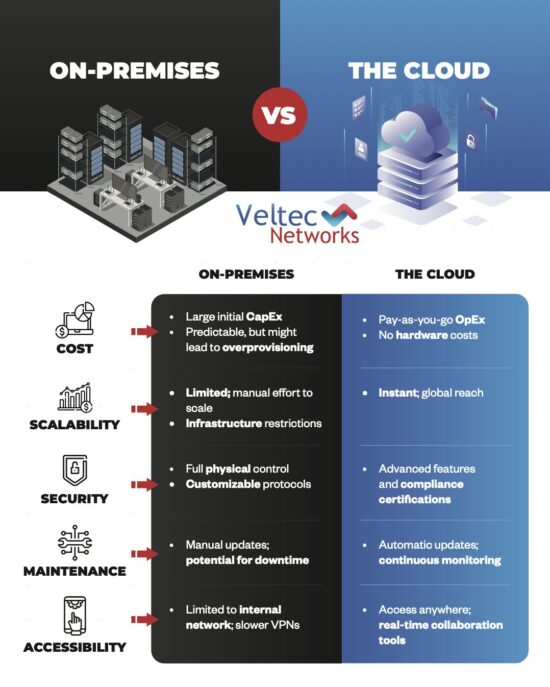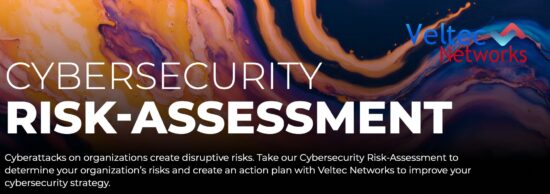9 Ways IoT Devices Can Threaten Your Business’ Cybersecurity
The ever-expanding network of Internet of Things (IoT) devices offers a range of convenient benefits to consumers, and provides exciting applications in the business world as well, from office space management to agriculture weather monitoring.
That’s why this technology is becoming so popular. In fact, it is estimated the total number of IoT devices in use around the globe will amount to 30.9 billion units by 2025. Unfortunately, as IoT device use becomes more common in the business world, so do the associated risks.
The fact is that these technologies are not necessarily secure. IoT devices are becoming a more and popular target for cybercriminals. Aspects of product security and lifecycle are often treated as an afterthought at best in the development and production of these products.
That’s why you need to be aware of how these devices can affect your cybersecurity, and how to deal with that properly.
9 IoT-Related Cybersecurity Risks You Need To Know About
- Insufficient Security Controls: Despite the degree to which IoT devices can threaten security, most of these devices lack the capability to be patched with the latest security updates. This makes them ongoing threats to organizational security. Case in point: did you know that over 95% of all IoT device traffic is unencrypted?
- Threat To Confidential Data: IoT devices can be configured to collect enormous amounts of very specific data about environments and users. Some may even store and share this data without explicit permission.
- Added Complexity In Workplace Security: The rapid adoption of IoT devices poses a serious challenge for IT teams. Factor in remote work and the increasingly decentralized state of modern business networks, and you end up with multiple potential attack vectors.
- No Standard Security: As a so-far unregulated aspect of the IT world, IoT devices have been developed with minimal or nonexistent security features, despite the fact that they often connect over networks to sensitive data.
- Default Security Vulnerabilities: Businesses that fail to update default passwords and other security standards in place with IoT devices make easy targets for cybercriminals.
- Challenging Security Policies: A “one size fits all” security policy will not be enough to ensure security for all IoT devices. This issue is exacerbated if your business engages in remote work — a combination of home and business networks adds complexity. That’s why your policies need to be appropriately complex and detailed.
- Inconsistent IoT Security Awareness Training: If your team doesn’t know how to use IoT devices in a secure manner, they’re putting your business at risk.
- Industry-Specific Risks: As of 2019, 87% of healthcare organizations have introduced the IoT into their operations. Consider that, If the data collected by medical IoT devices is compromised or deleted, it can easily affect the quality of care and patient safety.
- Inherent Vulnerabilities: As a relatively new technology, IoT devices present a range of common vulnerabilities. That’s why roughly 72% of organizations experienced an increase in endpoint and IoT security incidents last year and 56% of organizations expect to be compromised via an endpoint or IoT-originated attack within the next 12 months.
Potential vulnerabilities include:
- Botnet Attacks that carry out acts such as credential leaks, unauthorized access, data theft, and DDoS attacks.
- Denial-of-Service/Distributed Denial-of-Service (DoS and DDoS) attacks that flood your business’ systems with multiple data requests, resulting in lags and crashes.
- Malware attacks that hijack your systems and turn them into botnets that follow the hacker’s commands.
- Passive wiretapping/Man-in-the-Middle (MITM) attacks that involve an unauthorized entity breaking into your business’ network, posing as an insider, and threatening your business’ data.
- Structured Query Language injection (SQL injection), which can destroy your databases.
- Zero-Day Exploits, in which an undetected vulnerability is used by cybercriminals to gain access and cause damage.
How Can You Use IoT Devices Securely?
Statistica estimates that only 28% of business executives are intending to invest further in IoT-based security.
Users that are concerned about the security of their IoT devices and networks can start to improve their defenses simply by treating their devices like they would any others, and follow these key cybersecurity best practices
- Password Management: Just as a user shouldn’t leave the default administrator login and password set on their router, their laptop, or other hardware, they shouldn’t do so with the smart fridge they just bought for the office break room either. IoT users should make sure to set unique and complex passwords for all their devices and update them every 90 days.
- Network Monitoring: Given that IoT devices are connected to a network, whether it’s private Wi-Fi at home or an enterprise solution at work, that network needs to be observed properly to spot any attempts by external parties to break into it. Investing in a network monitoring solution, or outsourcing it to a third-party IT company will help to protect networks that include IoT devices.
- Update and Patch Management: Just as patches and updates need to be applied for conventional software and hardware in use, the same is true of IoT devices. The firmware that these devices operate on will need to be kept up to date with the latest patches issued by developers to make sure that they are kept secure against recently discovered vulnerabilities.
- SOCI & SIEM: SIEM technology provides a secure cloud service that provides 24/7 security and operation monitoring to oversee your IoT devices and network as a whole. A SOC team can monitor user reports and a range of data sources – such as logs — from information systems and cybersecurity controls to further protect your IoT network. The combination of SOC & SIEM will do a lot to mitigate the potential risk of using IoT devices at your practice, with an automated system tracking security events, and an outsourced team to respond to issues as they occur in real-time.
- Commercial Grade Firewalls: This type of security hardware adds another layer of protection between hackers and your IoT devices, ensuring they’re kept safe from common types of attacks. Make sure you invest in commercial-grade firewalls, which are developed with business use and purposes in mind, as opposed to limited consumer firewalls.
IoT Cybersecurity & Compliance
There may be no universal regulatory requirements or “standards” for the security of IoT devices, but that doesn’t mean you can get away with insufficient security. It will catch up with you eventually, which is why you should be proactive and do something about it now.
Veltec Networks will help you securely strategize and implement IoT devices without compromising your security. Connect with us and learn how your business can take advantage of the IoT, without taking on any extra risks.






